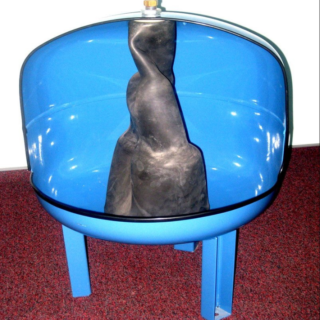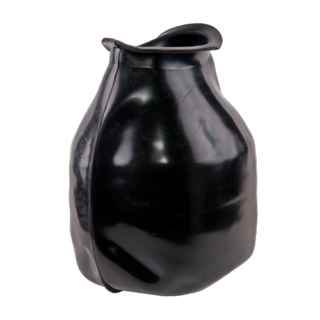A hydraulic tank is a capacity in the water supply system of a private house for storing water supplies in the event of a power outage. It is also used to reduce the number of pump starts, which significantly extends the uptime of the equipment. It is not difficult to make a hydroaccumulator with your own hands, using diagrams or videos that show the assembly and connection process in detail.
Accumulator device

In the water supply system, the accumulator is located immediately after the pump. Its function is not only to protect the machine against wear. The capacity prevents system breakdown due to water hammer and maintains constant pressure. Thanks to her, the water pressure in the tap does not change, perhaps a little, before the next pump is turned on.
The hydraulic tank inside consists of two parts. One - a rubber membrane - contains liquid, the other - air or gas. Air is pumped inside until a certain moment so that the difference between switching on and off is no more than 1 atmosphere.
When liquid is supplied to the container, the pressure rises inside, and the compressed air begins to press on the rubber bulb. Water flows until the pressure gauge works to turn off the pumping equipment. If at this time the tap in the house is opened, the water will flow with good pressure. As soon as its amount decreases to the lower value of the pressure gauge, the equipment turns on again, and the liquid again begins to flow into the accumulator.
Some models do not have a rubber bulb inside. For its manufacture, high quality food grade rubber is used, capable of withstanding a large number of stretching and compression cycles. At home, you can do without a membrane.
Required tools and materials

To make a hydraulic accumulator for water supply systems with your own hands, you need to prepare the following tools and materials:
- a container made of food grade plastic if the system will store drinking water;
- a piece of thin rubber to create a seal;
- silicone sealant;
- nipple through which air will be pumped inward.
In addition, you will need a drill, screws and nuts to install the container, as well as tees for connecting to the water supply, taps, a quarter-piece for connecting a pressure gauge. The main element - a pressure gauge - can be bought at a hardware store.
The volume of the hydraulic tank must be more than 30 liters for its installation to be cost-effective and to protect the equipment from unnecessary start-ups.
Stages of making a hydroaccumulator with your own hands
- Using a drill, make three holes in the container: one at the top for the quarter-piece, the second at the side for the tap, and the third at the bottom for the tee.
- It is necessary to make rubber gaskets on the valves before installing them.
- A tap is placed at the bottom, a tee is screwed to it for supplying and further transporting liquid to the house.
- An ordinary tap is mounted on the side, through which it will be possible to bleed off excess water.
- A quarter-piece is placed on top, and a nipple, a pressure gauge and a pressure sensor are connected to it.
All connections are coated with sealant so that there is no leakage. After assembly, the tank must be started correctly. For this:
- Open the side tap.
- After turning on the pump, water will begin to draw in until it starts to flow out from the side.
- Close the tap.
- Pump air up to 1 - 2 atmospheres with a regular bicycle or car pump through the nipple.
Then the container can be operated. There is an option to buy a membrane in a service center, which is intended for replacement in pumping stations, and try to install it yourself in a plastic container. One condition: the diameter of the inlet must match the diameter of the diaphragm throat. With this method, you will need an additional element - a neck holder so that water does not leak.
A membraneless tank requires constant maintenance during operation. You will have to pump air every 2 days. Before that, the liquid is drained through the side valve, then it is closed and air is pumped in.
Errors in work
Low-quality plastic, which will burst under the pressure of water and air, can reduce the service life. Too small capacity is ineffective for a private home. You cannot buy a cheap sealant, otherwise the connections will begin to flow the very next day. Electrical cables from the pressure switch must not come into contact with liquid to avoid short circuits.
For convenient use, it is necessary to correctly set the lower and upper pressure limits. If this is not done, the difference in water pressure will be noticeable. If at this moment one of the residents is bathing in the shower, boiling water will flow from the tap just before turning on the pump, as the pressure will weaken.









